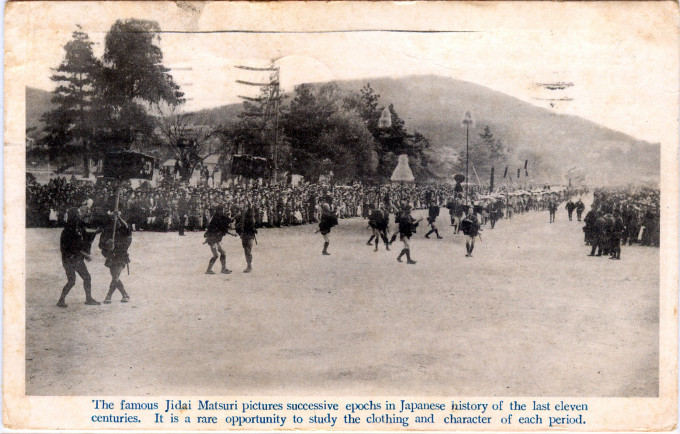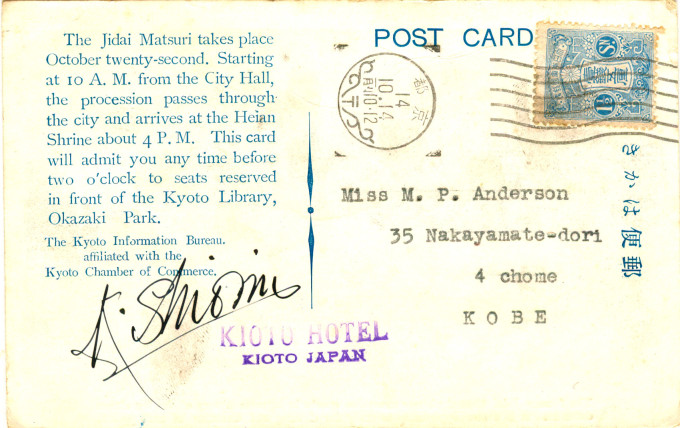“Jidai Matsuri (Festival of the Ages) is a traditional Japanese festival (also called the matsuri) held on October 22 annually in Kyoto, Japan.
“The festival traces its roots with the relocation of the Japanese capital from Kyoto to Tokyo in 1868, involving the relocation of the Emperor of Japan and his imperial family, the Imperial Palace and thousands of government officials and subjects to the new capital city.
“Fearing for Kyoto’s loss in glory and interest by her people, the Kyoto city government and the Kyoto Prefectural Government commemorated the 1100th anniversary of the founding of Heian-kyō (the former name of the Kyoto capital), in 794 by Emperor Kammu. To inaugurate the first Jidai celebration in 1895, the city government built the Heian Shrine to enshrine the spirit of Emperor Kanmu.
“Jidai Matsuri begins in early morning with the mikoshi (portable shrines) brought out of the Old Imperial Palace, representing emperors Kanmu and Kōmei, so that people may pay their respects.
“The five-hour, two-kilometer costume procession begins in the afternoon, with approximately 2,000 performers dressed as samurai, military figures, and common people, from the earliest eras to the Meiji era. These are followed by Japanese women who are dressed in elaborate jūnihitoe [lit. ‘twelve layers’, Heian period court dress]. The mikoshi are carried from the Kyoto palace and are accompanied by a costumed military band, with the procession ending at the Heian Shrine.”
– Wikipedia

“The famous Jidai Matsuri pictures successive epochs in Japanese history of the last eleven centuries. It is a rate opportunity to study the clothing and character of each period.” Kyoto, 1914. The festival reenacts the procession and relocation of the Emperor of Japan (Meiji) and his imperial family, the Imperial Palace Household, and thousands of government officials and subjects from Kyoto to the new capital city established at Tokyo (née Edo) in 1868.
See also:
Gion Matsuri (Gion Festival), Kyoto, c. 1930
Kyoto Hotel, c. 1910
“Japan’s modern symbolic and ritual topography very much resembled Russia’s, and the meanings that the Russian ruling elites found in Moscow and St. Petersburg were remarkably similar to those that Japan’s ruling elites attached to Kyoto and Tokyo.
“… [The] example of Russia’s two capitals appears to have exerted a considerable influence upon those who wished to retain Kyoto, along with Tokyo, as one of Japan’s capital cities … Japan’s ruling elites would involve the ancient capital in the nation’s ceremonies even as Tokyo became the imperial seat, was equipped with a new imperial palace, and was the favorite of the civilizationists.
“… Even after the Privy Council debate, Kyoto continued its evolution into the official representation of the past. Nowhere is this seen better than in the construction Heian Shrine in 1895, and the invention of what was called the Jidai matsuri (‘Period Festival’).”
– Splendid Monarchy: Power and Pageantry in Modern Japan, by Takashi Fujitani, 1996

Reverse of the above postcard, postmarked 14 Oct 1914, showing a personal invitation to the Jidai Matsuri issued to a guest of the Kioto [sic] Hotel.

